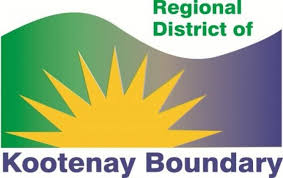April snowpack lower than March, but still above normal in RDKB
The snow basin index or the amount of snow in the mountains is 122 per cent of normal in the Boundary, a reduction of 12 per cent since March 1, and 118 per cent of normal in the West Kootenay, a reduction of four per cent.
“We are in a good weather trend right now with cooler nights and warm days, and if this keeps up for the next couple of weeks decline in snow levels at upper elevations, which will be in keeping with a normal freshet,” said Mark Stephens, Interim Manager of Emergency Programs at the RDKB and Emergency Operations Centre (EOC) Director.
The RDKB Emergency Program has been monitoring snowpack levels and weather conditions through out the winter. In spring, freshet risk assessments happen more often and are a core focus of both the Emergency Program and the EOC.
“The RDKB regional EOC has activated our advanced planning group within the EOC to help with the planning and analysis with the added lens of COVID-19.”
Stephens emphasized that shorter-term temperature variations and precipitation events can dramatically affect how the snow melts and runs off, and snow levels are still high.
The RDKB emergency program monitors snowpack, river levels and weather forecasts daily and communicates regularly with provincial staff at the BC River Forecast Centre and emergency program staff at Emergency Management BC. Emergency officials also play a key role in educating residents to prepare themselves for any emergencies that could occur in the region. Before the 2020 freshet, the Emergency Program encourages residents to do four things:
1. Ensure that drains, culverts and other means of moving water away from residences
remain clear as the snow continues to melt.
2. Sign up to receive emergency evacuation alerts on a landline, mobile device or by
email at emergency.rdkb.com or contact the RDKB directly at 1-800-355-7352 to get
help signing up.
3. Prepare by developing a household emergency plan, putting together a grab-and-go bag and connecting with neighbours. Emergencies teach us that knowing neighbours and developing a neighbourhood emergency plan can dramatically change how we fare in an emergency and how we recover afterwards.
4. For those with river and lake front property that have experienced flooding in the past this is a good time to start planning flood protection for your household.
The RDKB Emergency Operations Centre is activated to a Level 2, which means multiple staff are dedicated to addressing both the 2020 freshet and the ongoing COVID-19 pandemic.
Information on current river and snowpack levels is available at emergency.rdkb.com.
More information about preparing for emergencies is available on the Prepared BC website:
https://www2.gov.bc.ca/gov/content/safety/emergency-preparedness-response-recovery/preparedbc


























